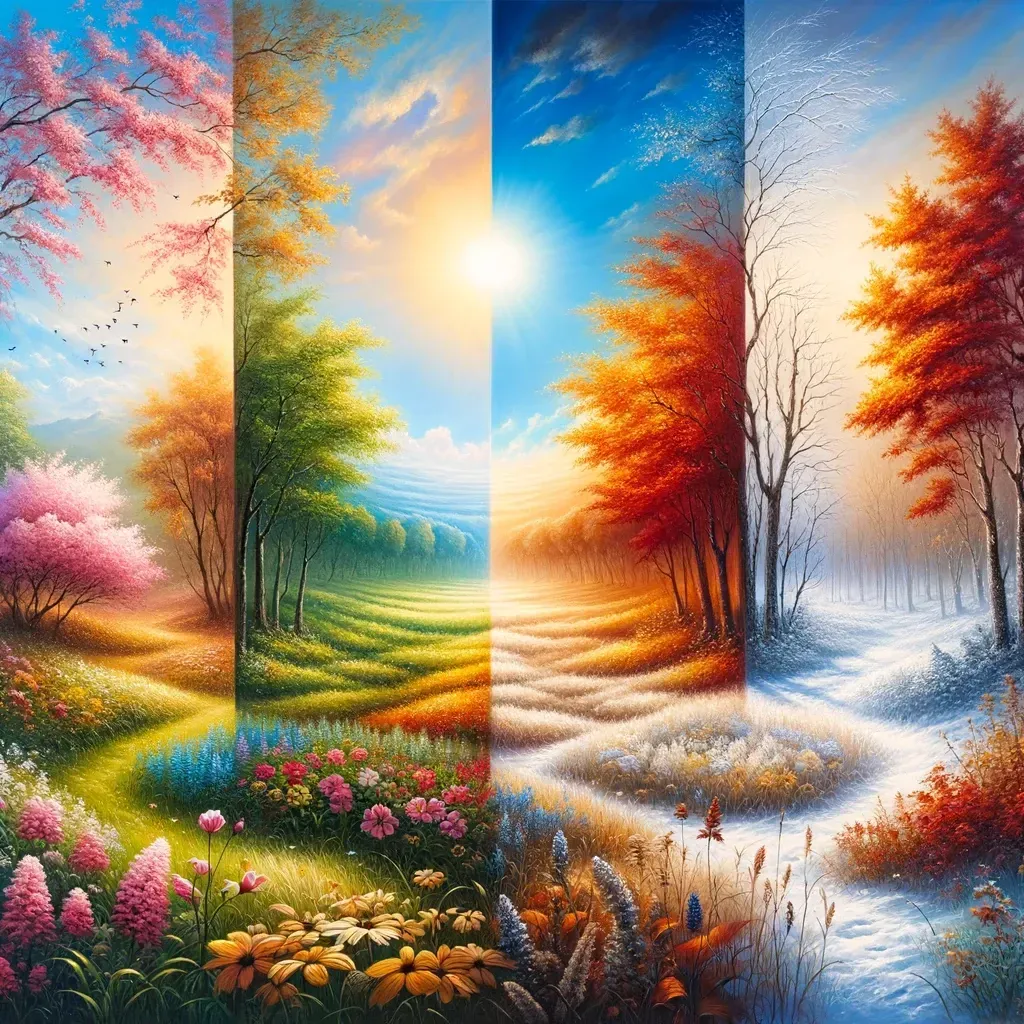The rhythm of the seasons brings with it a profound influence on artistic expression. Each season, with its unique colors, light, and mood, offers a fresh canvas for artists to explore and depict. This blog post delves into how the changing seasons inspire artists, showcasing how these natural transitions influence creativity and result in breathtaking seasonal landscape paintings.
Spring: A Rebirth of Creativity
Spring is a season of renewal and new beginnings, characteristics that naturally lend themselves to artistic inspiration. As the natural world awakens from the chill of winter, so too do artists find fresh inspiration. The vibrant greens, the explosion of floral colors, and the soft, warm light of spring drive painters to capture its rejuvenating spirit. Artists like Claude Monet have famously captured the essence of spring in their works, with Monet’s series of water lilies and impressionistic garden scenes reflecting the renewal that defines this season.
Summer: Vibrancy and Vitality
Summer is characterized by its intense light and bold, saturated colors. The long days and warm nights create an atmosphere filled with energy and vibrancy, which are echoed in the works of artists like Vincent van Gogh. His sunflower paintings and vivid landscapes are testaments to summer’s dynamic character. The bold use of yellows and blues not only captures the visual splendor of summer but also conveys the emotional warmth and energy that the season can evoke.
Autumn: Reflective and Transitory
Autumn is a favorite among many artists for its dramatic changes in color and light. The fiery reds, oranges, and yellows of falling leaves provide a palette that can evoke a sense of warmth and nostalgia. This season is often seen as a time of reflection, a theme beautifully encapsulated in the works of artists like John Constable, whose depictions of the English countryside in autumn reveal a deep appreciation for this transitory beauty. The soft, diffused light of autumn sunsets magnifies this reflective mood, offering artists a backdrop that enhances the emotional depth of their works.
Winter: Quietude and Contemplation
Winter strips the landscape to its bare bones, but this minimalism does not diminish the season’s beauty or its artistic allure. The quietude and contemplation that winter brings are palpable in the paintings of Caspar David Friedrich, whose winter scenes are both serene and sublime. The use of muted colors and the portrayal of snow-covered fields and forests reflect the introspective nature of winter, inviting viewers to explore the quiet beauty and introspection that the season fosters.
Conclusion: Seasons as a Muse
The changing seasons offer more than just a shift in weather; they provide a rhythmic cycle that continually offers new perspectives, colors, and emotions for artists to capture and interpret. Each season's unique character and mood not only influence the aesthetic and thematic direction of artwork but also connect viewers more deeply with the natural world. Seasonal landscape paintings are not just visually striking; they are windows into the varied emotional landscapes that each season evokes.
By reflecting on how each season has been interpreted through art, we gain a deeper appreciation for both the natural world and its artistic renderings, celebrating the perpetual inspiration that the rhythm of the seasons provides to those with a brush in hand.

